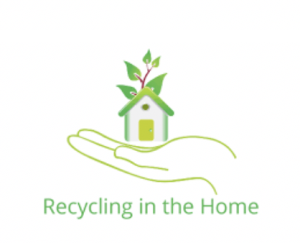Recycling Centers
New ResidentialWhat are Recycling Centers?
Recycling Centers are designated areas in a home designed to facilitate recycling. Recycling converts materials that would otherwise become waste into valuable resources and generates financial, environmental, and social returns, both locally and globally.[1] Recycling not only saves resources and but also reduces the need for landfills and resource recovery facilities.[2] Having a dedicated and organized recycling space makes recycling easy and increases the likelihood that occupants properly sort recyclables and trash.
Recycling certain materials in New Jersey is mandatory. For more information about solid waste and recycling in NJ, visit the NJ DEP Solid Hazardous Waste Management program website.
How to Implement Recycling Centers
Recycling programs should comply with local laws and regulations and be designed with convenience for residents in mind. Carefully consider the type of recycling containers, space allocations for containers and storage, and the movement of recyclables throughout the home from inside to outside. At a minimum, provide recycling collection areas for paper, corrugated cardboard, glass, plastic, and metals.

Figure 1 – Recycling at home (Source: Carrollcountymd.gov)
When designing a recycling area, important considerations include: [3]
- Allocating sufficient interior and exterior space.
- Planning for how to transport the materials to the outside collection area.
- Considering where materials are generated within the home and locate convenient central collection containers.
- Labeling collection containers clearly to ensure proper sorting.
- Considering space needs, access, and collection by vehicles for outdoor storage area.
Benefits
Planning a well-designed recycling station can lead to more efficient waste management and benefits for the homeowners and the environment. There are many benefits related to recycling over disposal but taking steps towards source reduction and material reuse first, and then implementing recycling efforts provides the most environmental benefit.[4]
Some benefits noted by the Natural Resources Defense Council include:[5]
- Conserves natural resources, such as timber, water, and mineral ores, from domestic and imported sources.
- Prevents pollution caused by manufacturing from virgin resources.
- Saves energy in the production of products from virgin materials that need to be harvested and manufactured.
- Reduces the need for landfills and incineration while also helping to reduce the pollution produced by these processes.
- Helps protect and expand manufacturing jobs in America.
- Engenders a sense of community involvement and responsibility in protecting the environment.
For a list of economic and environmental benefits of recycling in New Jersey, go to http://www.state.nj.us/dep//dshw/recycling/env_benefits.htm
Costs
Recycling costs vary, but recycling can reduce the waste stream and may be able to reduce the frequency of trash pick-ups or the size of disposal containers.[6] Recycling bins for the can vary in price depending on style and material but are widely available from a variety of manufacturers.
Resiliency
Proactive strategies for waste-related issues associated with disasters is an integral part of resilience planning.[7] Reducing waste and reusing or recycling materials can help protect natural habitats that contribute to more resilient ecosystems.
[1] US EPA. Reduce, Reuse, Recycle. http://www.epa.gov/osw/conserve/rrr/recycle.htm (accessed May 9, 2019).
[2] NJ DEP. Recycling in New Jersey. http://www.state.nj.us/dep//dshw/recycling/env_benefits.htm (accessed May 9, 2019).
[3] USGBC. LEED BD+C New Construction v4. https://www.usgbc.org/credits/new-construction-commercial-interiors-core-and-shell-schools-new-construction-healthcare-h-0?view=language (accessed May 9, 2019).
[4] NJ DEP. Recycling in New Jersey. http://www.state.nj.us/dep//dshw/recycling/env_benefits.htm (accessed May 9, 2019).
[5] Natural Resources Defense Council. Too Good to Throw Away. http://www.nrdc.org/cities/recycling/recyc/recyint.asp (accessed May 9, 2010).
[6] US EPA. Resource Conservation – Reduce, Reuse, Recycle. http://www.epa.gov/osw/conserve/rrr/recycle.htm (accessed May 9, 2019).
[7] US EPA. Waste Management Planning to Mitigate the Impacts of Climate Change. https://www.epa.gov/homeland-security-waste/waste-management-planning-mitigate-impact-climate-change (accessed March 24, 2019).
